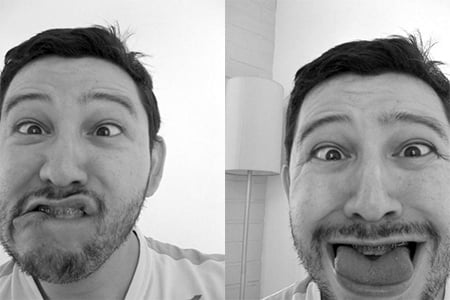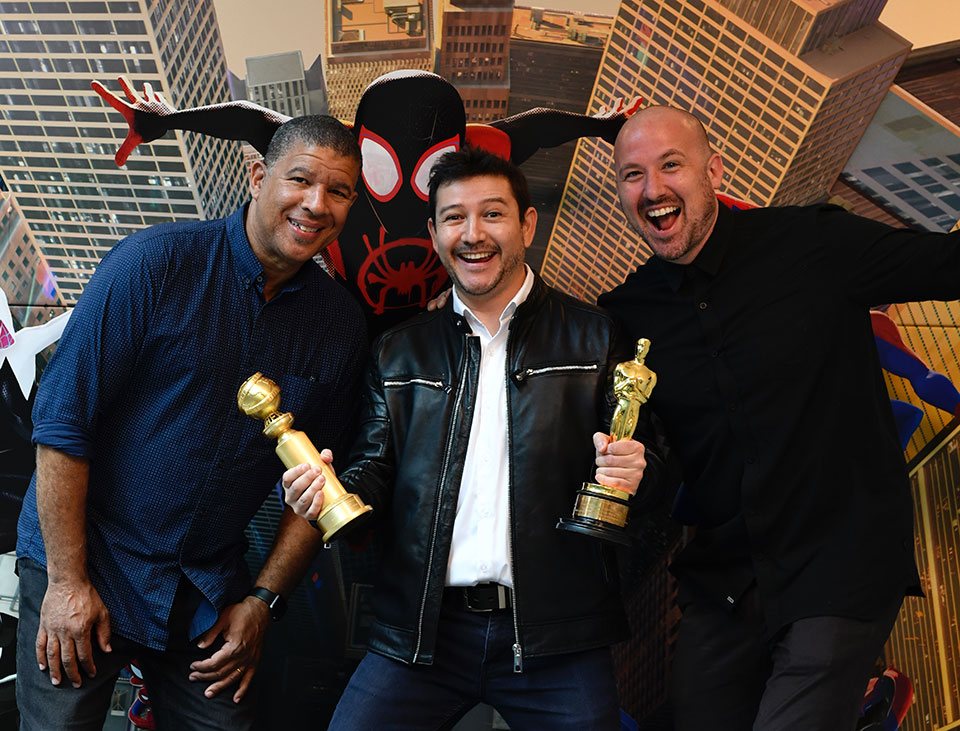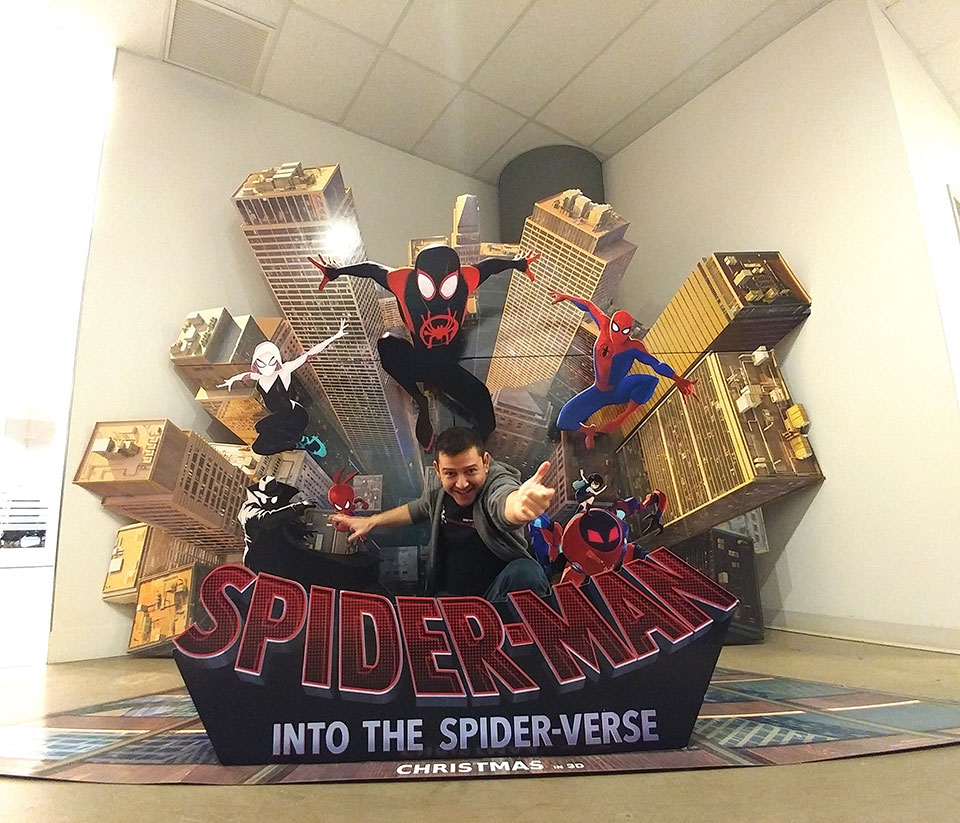
Interview in English
Learning to Animate
Animation Mentor: Can you describe your animation journey? How did you arrive at this moment in your career? Alex Olea: I studied tool workmanship, and though I never practiced it this helped me a lot. I started working on animation at age 19, mainly through empirical experience, experimentation, and studying on my own. Each workplace has been a school for me and my colleagues have been my mentors. During my self-taught career I’ve been part of traditional animation, 3d animation, advertising, and video games. Four years ago I started looking for a job abroad, new air, without much luck (I applied to more than 100 studios). Only Ubisoft Romania contacted me back; I did a test and I never heard back from them again. The problem was my demo reel wasn’t good enough, so I applied to Gobelins, France, hoping to graduate and getting directly into the biggest Pixar, Disney, Dreamworks, Sony, etc… Very naive of me. A few weeks passed and I received an answer from Ubisoft Romania, talking about relocation, but I kindly had to decline because my father had passed away the day before, it was really hard. During the next days I got an answer from Gobelins—I wasn’t accepted. I was falling apart. You have to hit rock bottom in order to stand up and start over, and I was at the very bottom. Animation Mentor was the first light, I applied and they accepted me against all odds. It was very exciting when I read Bobby’s letter, I really needed good news at that time.It was a new era, and without dreaming big, I just wanted to work on animation. I was driven by my love for this art and I forgot about big studios.I was on my last term in AM when Derek Esparza contacted me, he was an animator for Sony and a mentor in AM. He asked me if I was interested in showing my reel to his supervisor… I was in shock! Obviously I said yes. Seven months later I was working for Spider-Man Into The Spider-Verse, in Sony Pictures Vancouver. Unreal! AM: What is the best piece of animation advice you’ve received? AO: There’s been many, but my favorite one is, “Animate from your heart”. When I deeply understood this I lost my fears.
Animate from your heart.
Working at Sony
AM: Can you walk us through a typical day at Sony? AO: I greet everyone in the morning on my way to my desk (the doorman, janitors, artists, etc.). I have an egg-bite while my computer turns on (it takes a while). I get instructions from my lead, watch kick off videos with the director’s notes (in order to understand what the video’s about). I record my references and show them in the review room, which is like a small movie theater. We even have snacks there! When my family is visiting we have lunch at home, and when they’re not I eat with my friends at Sony. It’s very nice because we all come from different countries and cultures. Then I come back, animate, show my progress, do my tasks until the end of the day. In general time flies at work. AM: What was the most difficult shot you animated for Spider-Man: Into the Spider-Verse? What was the most fun? AO: The most difficult scene to animate for me was when Miles gets his fingers stuck to the door, flips in the air, hits his face with the door, falls to the ground, stands up, and grabs his own arm to unstick it from the door. But that wasn’t all, as one of his backpack straps had to fall apart during this action. I had to animate that backpack frame by frame, it was really challenging, but I learned a lot! Besides I got tons of help from my lead and colleagues. I gave them chocolates anytime I could. The most fun, I’d say two: certainly Spidy-Bell. And the other one when Miles walks invisible carrying the computer and the screen turns towards Peter. The funny thing was that I shot many video references, but it turned out that Miles was totally invisible…still funny. AM: You shoot amazing video reference for your animation! Can you talk about why that’s important? AO: Oh, thanks! If my “acting skills” help me animate, well, honestly I don’t know. I’d say I’m a good observer, I pay attention to subtle details, and determine if something looks natural or not. It’s a sort of maturity I guess, given by practice and of course help from your director and animation leads, they guide you until you get the best result for the film. Being a good observer helps you to work with your own or other video references. In relation to acting, maybe exploring pantomime during high school helped, I was very involved in extracurricular activities back then. My classmates used to say “Hey, mime!” AM: What surprised you most about working at a film studio? AO: I was amazed by the great number of processes for every shot. I was also surprised by the important work from coordinators and production assistants. And last, but not least, the good working environment among everyone, along with respect and kindness.Into the Spider-Verse
AM: What’s your favorite character you’ve ever animated and why? AO: Definitely Miles Morales, I can relate to him. At first he is shy and introverted, not very self-confident, and then he discovers his abilities and embraces his identity, breaking the shell. I didn’t become a superhero, but I became aware of my skills and potential, and the long learning journey I have in front of me. There are many Peter Parkers in Sony who continue to help me out.I can relate to [Miles Morales]. At first he is shy and introverted, not very self-confident, and then he discovers his abilities and embraces his identity.AM: What makes animation so special? AO: Ah, the big question. A very personal question…I don’t know if my colleagues share this vision as well. I think what makes it special is “what is not,” because it doesn’t exist as such, it’s an illusion. If you pause a movie you will only see a boring, dead frame, just a bunch of pixels without any sound. To me an animated movie is the apex of a creative process: Worlds and stories are created, which never existed in the first place. Yet this illusion is so powerful and touching that makes people laugh and cry. That’s why this art is so wonderful to me.

Alex with Spider-Verse Director Peter Ramsey, Animation Supervisor Joshua Beveridge, and some well-earned awards
To me an animated movie is the apex of a creative process: Worlds and stories are created, which never existed in the first place. Yet this illusion is so powerful and touching that makes people laugh and cry.
Entrevista en Español
Aprender a Animar
Animation Mentor: ¿Puedes contarnos como ha sido tu recorrido en la animación? ¿Cómo llegaste a este momento de tu carrera? Alex Olea: Estudié mecánica de máquinas herramientas y aunque nunca lo ejercí reconozco -y agradezco- que me ha ayudado muchísimo. Comencé a trabajar en el mundo de la animación a los 19 años, me formé a través de experiencia laboral, estudiando libros y experimentando. Cada lugar de trabajo ha sido una escuela para mí, y además, muchos de mis colegas unos verdaderos mentores. A lo largo de mi carrera autodidacta he participado en producciones de animación tradicional, animación 3d, spot publicitarios y videojuegos. Hace unos 4 años atrás decidí buscar trabajo fuera de Chile -necesitaba un nuevo aire- pero no tuve mucha suerte (apliqué a más de 100 estudios) sólo me contactó uno de videojuegos en Rumania (Ubisoft); hice un test y no supe más de ellos. El problema era mi demo reel, no era lo suficientemente bueno, así que postulé a Gobelins (Francia) con la ilusión de graduarme y entrar inmediatamente a Pixar, Disney, Dreamworks o Sony -pensaba yo, ingenuamente-. Pasaron unas semanas y recibí respuesta de Ubisoft Rumania, querían hablar de re-localización, pero decliné porque el día anterior mi padre había fallecido -fue devastador-. Pocos días después recibí respuesta de Gobelins, no me aceptaron. Sentía que me desvanecía y junto con ello mis sueños. No estaba en condiciones de viajar a ninguna parte. Creo que para salir a flote primero debes tocar fondo, y yo ya estaba con los pies bien en el fondo. Animation Mentor fue la primera luz, me atreví a postular -con mucho miedo a ser rechazado- ¡pero me aceptaron! me emocioné mucho cuando leí la carta de Bobby, necesitaba esa buena noticia.Comenzaba una nueva etapa, ya no tenía sueños de grandeza, yo sólo quería hacer animación, conducido por el amor de este bello arte.Finalizaba el último term en AM cuando fui contactado por Derek Esparza (en ese entonces animador de Sony y Mentor en AM), me preguntó si me interesaba mostrarle mi reel a su supervisor de animación (yo casi me cago) ¡dije que sí, por supuesto! Siete meses después estaba trabajando en Spider-Man: Un nuevo universo, en Sony Pictures Vancouver ¡Surreal! AM: ¿Cuál es el mejor consejo que has recibido sobre la animación? AO: Han sido muchos, pero el más lindo sería “anima desde el amor (o el corazón).” Cuando entendí el real y profundo significado de esa frase perdí el miedo a equivocarme y a aprender de mis errores.
Trabajar en Sony
AM: ¿Puedes contarnos cómo es un día típico en Sony? AO: Llego en la mañana saludando a todos mientras camino a mi escritorio (al portero, la gente de servicio, artistas, etc), me como un egg-bite mientras enciende mi computador -toma un rato-. Recibo indicaciones de mi Lead, veo los videos “kick off” con indicaciones del director -para entender de que trata la secuencia- Grabo mis referencias y las muestro en la sala de “Reviews” que es como una sala de cine, pero más chiquita (¡tenemos snacks!). Cuando está mi familia de visita almuerzo con ellos en casa, y cuando no, como con mis amigos de Sony; es muy lindo porque venimos de varios países, es muy grato compartir y conocer otras culturas. Luego regreso, sigo animando, muestro mis avances y así hasta que llega la hora irse, en general se me pasa volando el tiempo. AM: ¿Cuál fue la toma más difícil que animaste para Spider-Man: Un nuevo universo? ¿Qué fue lo más divertido? AO: La más difícil -para mi- fue esa en que a Miles se le pegan los dedos a la puerta, da un giro en el aire, golpea la puerta con su cara, cae al suelo, se levanta nuevamente y agarra su brazo jalándolo para despegarse… pero eso no era todo, una de las tiritas de la mochila debía soltarse en algún momento de la acción. Tuve que animar prácticamente toda la mochila cuadro por cuadro. Fue un verdadero desafío, sudé, ¡pero aprendí muchísimo! además recibí mucha ayuda de otros animadores y mi lead, cuando podía les regalaba chocolates.Mr. Spidey Bells himself, Alex Olea, has uploaded a compilation of his #SpiderVerse animation video reference on Vimeo!
— Nick Kondo 近藤 (@NickTyson) March 27, 2019
Watch that and his other amazing work at: https://t.co/DPvuwyiuYr pic.twitter.com/8e2OeRO2o5
Me sorprendió la enorme cantidad de procesos que pasa cada uno de los shots.
Un Nuevo Universo
AM: ¿Cuál es el personaje que mas te ha gustado animar y por que? AO: Definitivamente Miles Morales, me identifico mucho con él. Al comienzo él es tímido y retraído, no confía mucho en sí mismo, pero luego va descubriendo sus verdaderas habilidades y finalmente asume quien es, rompiendo el cascarón. Yo no me convertí en ningún superhéroe, pero ahora estoy consciente de mis habilidades y el potencial que tengo y de lo mucho que me queda por aprender también. Han habido muchos “Peter Parker” en Sony que me siguen ayudando en este viaje.
Animator turned superhero!
Para mí una película animada es el máximo y culmine proceso creativo, puedes crear mundos e historias que no existen, jamás existieron y nunca van a existir.
Ready for more? Check out these related articles: Q&A with Pixar Animator Luis Uribe (en español e inglés) Animation Career Advice with Shawn Kelly & Carlos Baena Q&A with Spider-Man: Into the Spider-Verse Animator Nick Kondo



